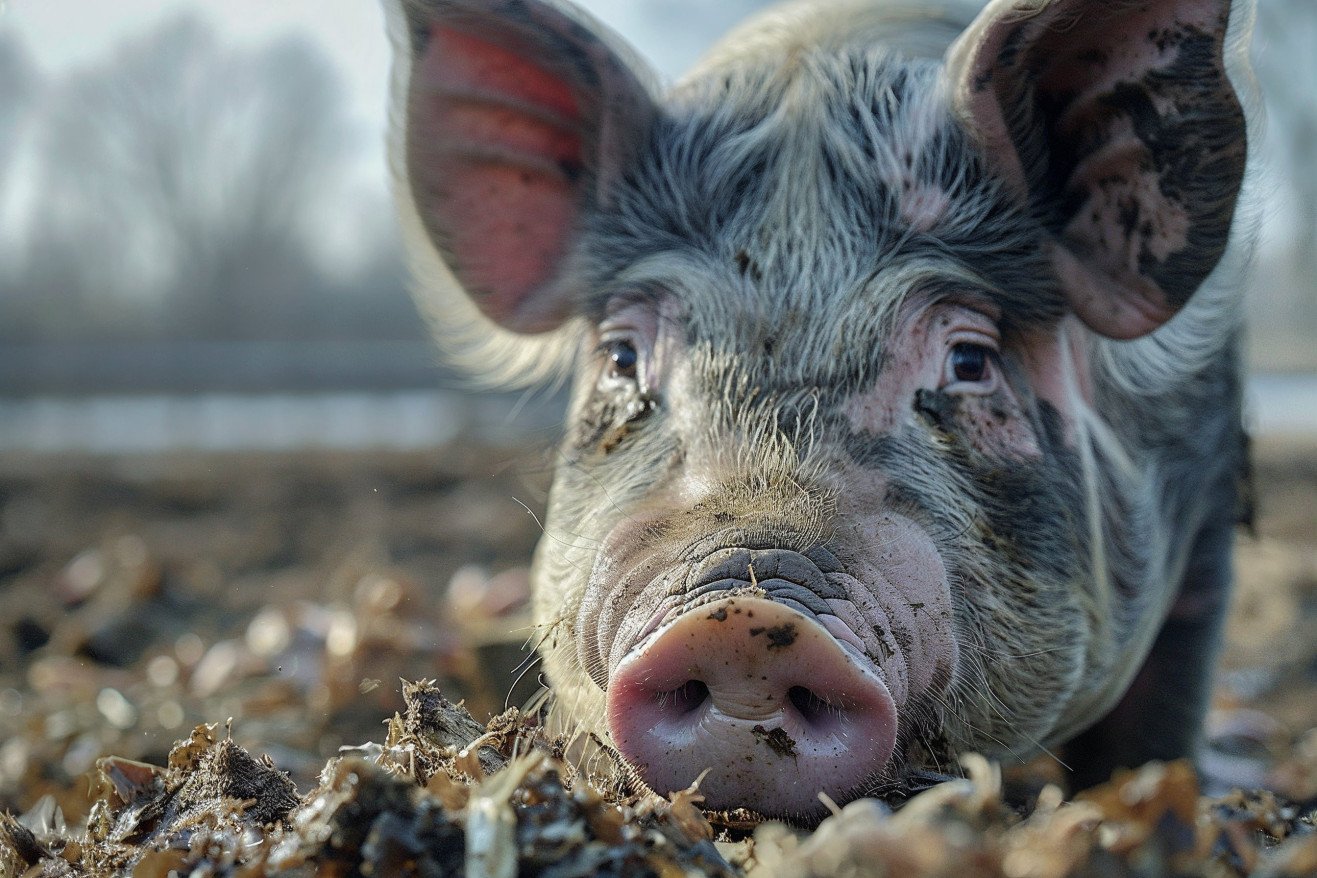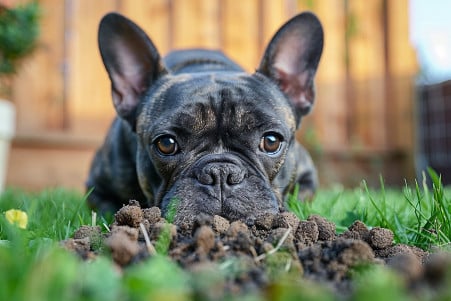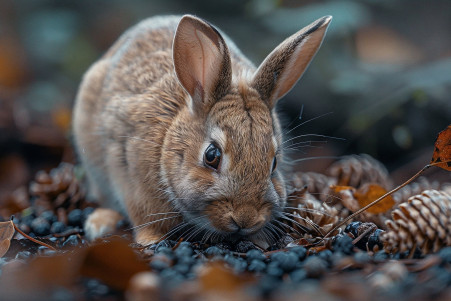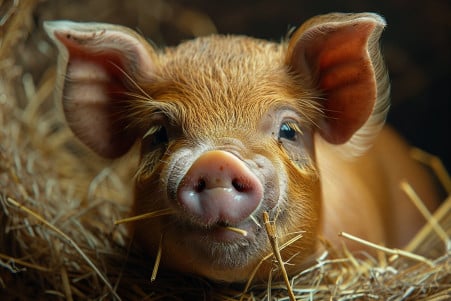Why Do Pigs Eat Their Own Poop? A Scientific Exploration
12 April 2024 • Updated 11 April 2024

Pigs have a number of reasons to eat their own feces, from getting essential nutrients to establishing social hierarchies. Yes, pigs eat their own poop, a behavior called coprophagy. It's completely normal and helps pigs get extra nutrients from food that wasn't fully digested the first time. It also helps piglets establish the gut bacteria they need to grow, and it can even show where a pig falls in the social order of the herd.
To better understand this strange behavior that's part of being a pig, we'll take a deep dive into a variety of scientific studies from the fields of animal behavior, evolutionary biology, and agriculture. This work will help us understand the causes, effects, and circumstances that lead pigs to eat their own feces. This scientific look at the behavior will help us understand the pig's digestive system, social life, and the evolution of this adaptation.
Do pigs eat their own poop?
Nutritional and Microbial Advantages of Coprophagia
Coprophagia is a clever way for pigs to take advantage of the nutritional value of their waste. Pig feces is surprisingly nutrient-rich, with crude protein, essential amino acids, vitamins, and minerals that the pig couldn’t absorb the first time it was eaten. According to research cited by ScienceDirect, pig feces contains 60% available crude protein with a high biological value of 70%. It’s also high in lysine, methionine, and threonine, amino acids that are often lacking in pig feed rations. Processed pig waste can also provide 1600 IU/kg of vitamin A.
Research has shown that dried pig feces can be used in animal feed to promote growth. As noted in the ScienceDirect article, pelleted diets with 30-50% liquid pig waste solids led to cattle gaining an average of 1.0-1.18 kg per day, which was only slightly less than the 1.23 kg/day gain of the control group. Sun-dried pig excreta with 17.88% crude protein was found to be safe for use in up to 30% of concentrate feed mixtures.
In addition to nutritional benefits, coprophagia helps piglets develop a healthy gut microbiome that’s important for digestion and growth. A study from PMC showed that piglets that were prevented from coprophagy with maternal feces during the first week of life had 25% lower white blood cell counts, lower feed intake, and nearly 10 kg less weight gain by 123 days of age than piglets that were allowed to eat feces. The maternal feces provides microbial factors and chemical cues that appear to have important physiological effects. So while it may sound gross, coprophagia is an evolutionary adaptation that helps pigs thrive.
Coprophagia as a Sign of Health and Welfare Concerns
Although coprophagia is a natural behavior in pigs, excessive coprophagy can be a sign of other health or nutritional concerns. As the ScienceDirect review explains, coprophagy can be a sign of environmental issues, such as pigs being kept in an environment that is too barren or that doesn’t provide enough stimulation, which can lead to the pigs engaging in the behavior more often. It can also be a sign of medical issues, such as pancreatic insufficiency or high parasite loads, as pigs may be trying to get more nutrients.
Free-roaming pigs are at a higher risk of both zoonotic and non-zoonotic diseases, as the BMC Veterinary Research study points out. The fact that free-roaming pigs can scavenge on the carcasses of infected wildlife or come into contact with infected feces means they are at a higher risk of contracting parasites like Taenia solium, Trichinella, and Toxoplasma. Meanwhile, the PMC study found that poor sanitation in intensive farming can lead to a high prevalence of gastrointestinal parasites in pigs.
The prevalence of these diseases and parasites can lead to more coprophagia in pigs as they try to get more nutrients. However, if coprophagia is happening in excess, it’s a sign that the pigs’ welfare and nutritional needs are not being met. This makes it important to understand what might be causing the behavior in order to ensure the pigs’ overall health and well-being.
Cultural and Religious Stigma
The pig has a long and complicated history as a symbol in many world religions. The Jewish dietary law that prohibits the consumption of pork is first mentioned in the Old Testament, where God tells Moses and his people not to eat swine "because it parts the hoof but does not chew the cud" and declares it "unclean" [Leviticus 11:27]. Scholars have proposed a number of different reasons for this law over the centuries, ranging from health concerns, as 12th-century rabbi Moses Maimonides suggested, to taxonomic issues, as anthropologist Mary Douglas proposed in her book Purity and Danger.
Douglas suggests that the pig's cloven hooves and failure to chew cud made it an anomaly that didn't fit into the Israelites' categories of domesticated animals. Animals that couldn't be neatly categorized, she posits, were considered symbols of pollution that threatened the tribal imperative to impose intellectual order on the world. This idea of pigs as unclean and polluting animals has persisted in the Abrahamic religions.
That said, even with this religious stigma, some cultures have used pig products, including pig feces, in traditional medicine and religious rituals. A study in Bangladesh found that Muslim healers and Hindu worshippers would buy pig teeth, hair, and feces to use in their spiritual and medical practices. This shows the complicated and often contradictory ways that humans have related to these intelligent animals throughout history.
Coprophagia and the Welfare of Pigs
The conditions of factory farming are known to cause both physical and psychological problems for pigs. As noted by the MSPCA-Angell, the overcrowding and confinement that are typical of factory farms are unnatural and lead to unsanitary living conditions where pigs are surrounded by their own waste, which in turn causes respiratory problems, the spread of disease, and leg disorders and obesity in sows.
The psychological problems are just as bad, with studies showing that the lack of environmental enrichment and the ability to perform natural behaviors like rooting and foraging results in chronic stress, depression, and abnormal coping behaviors in pigs. Alternative group housing systems, which are shown in an Iowa State University study to allow pigs to perform more natural behaviors, can improve welfare.
Other solutions, like the use of designated 'pig toilet' areas, which are discussed in the PMC review, can help with waste containment and pen soiling. However, the use of 'feedback' (where dead piglet bodies are fed to adult pigs) to help control the spread of disease, as mentioned in the PMC review, is less effective and ethical than addressing the root cause of the problem, such as overcrowding. This would prevent the spread of disease in the first place. Unfortunately, as noted by Vox, the unsanitary conditions that lead to the use of feedback are often due to the industry's prioritization of cost-cutting over animal welfare.
More sustainable farming models, such as those that use pigs as working animals, which are discussed in The Sustainability Index, take a more comprehensive approach. For example, by using pigs to cooperatively turn compost and forage with chickens, these systems reduce the need for machinery and encourage more natural, welfare-friendly behaviors.
Conclusion: Reframing Our Understanding of Pigs
Coprophagia is a natural and adaptive behavior for pigs, with evolutionary roots. It provides nutritional, microbial, and social benefits for pigs when practiced in moderation. Excessive coprophagia can signal underlying welfare issues that need to be addressed.
Improving pig farming practices and housing conditions can mitigate negative aspects. Overcoming cultural stigma is crucial for promoting better treatment of these intelligent animals.


